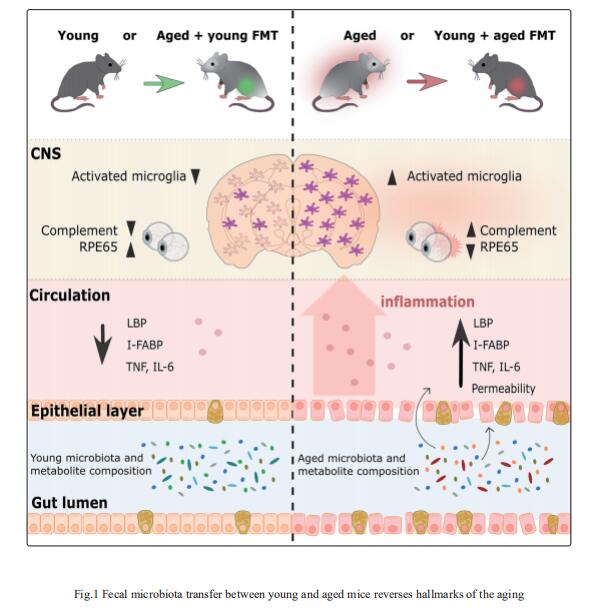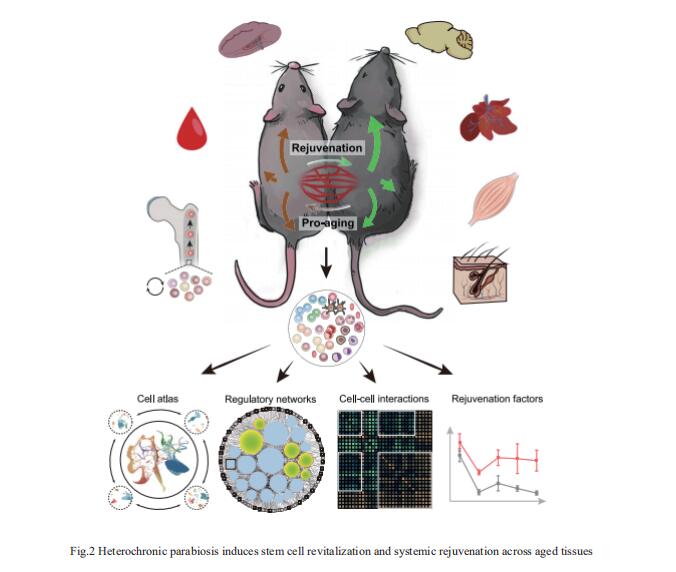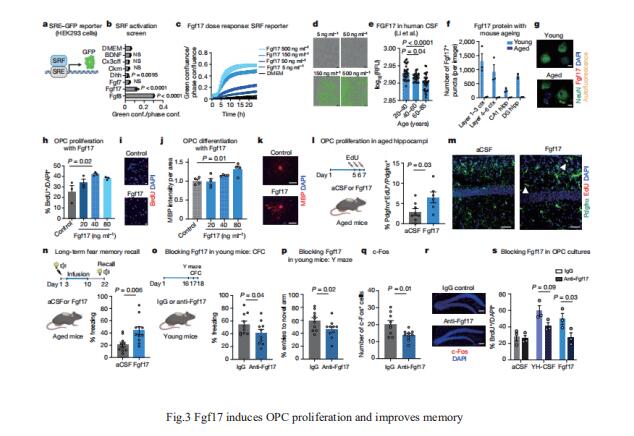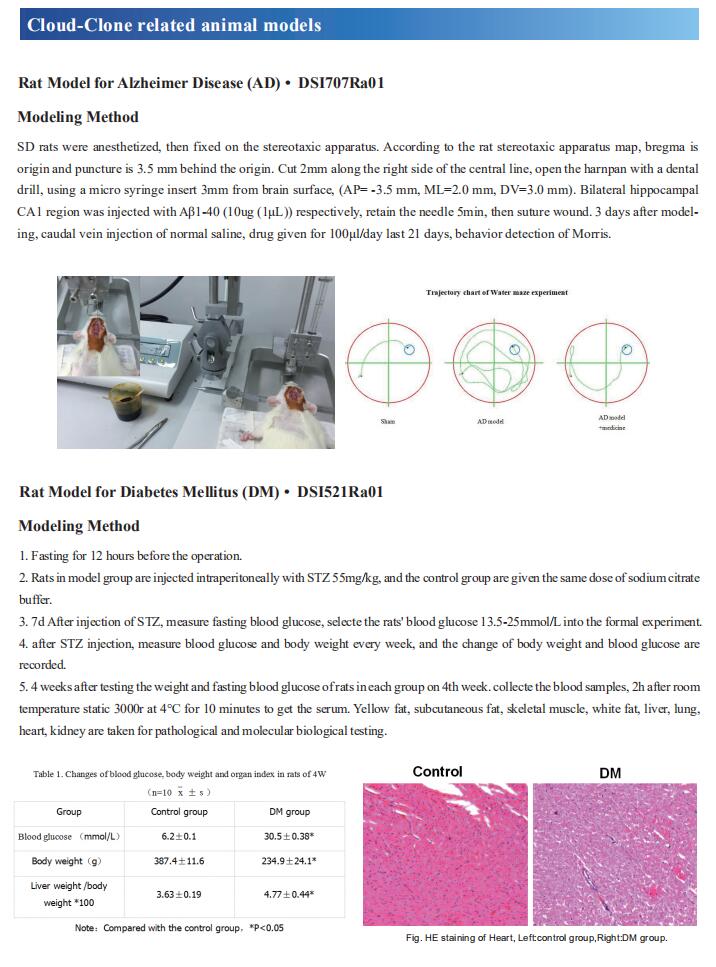Using young individuals to reverse aging
Nowadays, human life expectancies are increasing, and studies on aging biology are looking to elucidate the biochemical and genetic processes that lead to aging over time and to find new strategies to counter this process. Aging is a process in which there is an irreversible and progressive decline of physiological functions; this loss could lead to the most important age-related diseases, such as cardiovascular diseases, musculoskeletal disorders and arthritis, neurodegenerative diseases, and cancer. Recently, a number of studies have reported that fecal microbes, blood, cerebrospinal fluid and other substances from young individuals can reverse aging in elderly individuals, which may provide help for the treatment of age-related diseases.
1. Fecal microbiota transfer between young and aged mice reverses hallmarks of the aging
Altered intestinal microbiota composition in later life is associated with inflammaging, declining tissue function, and increased susceptibility to age-associated chronic diseases, including neurodegenerative dementias. Simon R. Carding, Gut Microbes and Health Research Programme, Quadram Institute, UK, and his team tested the hypothesis that manipulating the intestinal microbiota influences the development of major comorbidities associated with aging and, in particular, inflammation affecting the brain and retina[1]. Using fecal microbiota transplantation(FMT), they exchanged the intestinal microbiota of young (3 months), old (18 months), and aged (24 months) mice. They showed that microbiota composition profiles and key species enriched in young or aged mice were successfully transferred by FMT between young and aged mice and that FMT modulates resulting metabolic pathway profles. The transfer of aged donor microbiota into young mice accelerates age-associated central nervous system (CNS) inflammation, retinal inflammation, and cytokine signaling and promotes loss of key functional protein in the eye, effects which are coincident with increased intestinal barrier permeability(Fig.1). Conversely, these detrimental effects can be reversed by the transfer of young donor microbiota(Fig.1). These findings demonstrate that the aging gut microbiota drives detrimental changes in the gut–brain and gut–retina axes suggesting that microbial modulation may be of therapeutic benefit in preventing inflammation-related tissue decline in later life.

2. Heterochronic parabiosis induces stem cell revitalization and systemic rejuvenation across aged tissues
The young circulatory milieu capable of delaying aging in individual tissues is of interest as rejuvenation strategies, but how it achieves cellular- and systemic-level effects has remained unclear. Guang-Hui Liu, State Key Laboratory of Membrane Biology, Institute of Zoology, Chinese Academy of Sciences, China, and his team constructed a single-cell transcriptomic atlas across aged tissues/organs and their rejuvenation in heterochronic parabiosis (HP)[2]. They identified hematopoietic stem and progenitor cells (HSPCs) as one of the most responsive cell types to young blood exposure, from which a continuum of cell state changes across the hematopoietic and immune system emanated, through the restoration of a youthful transcriptional regulatory program and cytokine-mediated cell-cell communications in HSPCs(Fig.2). Moreover, the reintroduction of the identified rejuvenating factors alleviated age-associated lymphopoiesis decline. Overall, the study provided comprehensive frameworks to explore aging and rejuvenating trajectories at single-cell resolution and revealed cellular and molecular programs that instruct systemic revitalization by blood-borne factors.

3. Young CSF restores oligodendrogenesis and memory in aged mice via Fgf17
Cerebrospinal fuid (CSF) makes up the immediate environment of brain cells, providing them with nourishing compounds. Tony Wyss-Coray, Department of Neurology and Neurological Sciences, Stanford University School of Medicine, USA, and his team discovered that infusing young CSF directly into aged brains improves memory function[3]. Unbiased transcriptome analysis of the hippocampus identifed oligodendrocytes to be most responsive to this rejuvenated CSF environment. They further showed that young CSF boosts oligodendrocyte progenitor cell (OPC) proliferation and diferentiation in the aged hippocampus and in primary OPC cultures. Using SLAMseq to metabolically label nascent mRNA, they identifed serum response factor (SRF), a transcription factor that drives actin cytoskeleton rearrangement, as a mediator of OPC proliferation following exposure to young CSF. With age, SRF expression decreases in hippocampal OPCs, and the pathway is induced by acute injection with young CSF. They screened for potential SRF activators in CSF and found that fbroblast growth factor 17 (Fgf17) infusion is sufcient to induce OPC proliferation and long-term memory consolidation in aged mice while Fgf17 blockade impairs cognition in young mice(Fig.3). These fndings demonstrate the rejuvenating power of young CSF and identify Fgf17 as a key target to restore oligodendrocyte function in the ageing brain.

References
[1]Parker A, Romano S, Ansorge R, et al. Fecal microbiota transfer between young and aged mice reverses hallmarks of the aging gut, eye, and brain [J]. Microbiome. 2022, 10(1):68. (IF=14.650)
[2]Ma S, Wang S, Ye Y, et al. Heterochronic parabiosis induces stem cell revitalization and systemic rejuvenation across aged tissues [J]. Cell Stem Cell. 2022, S1934-5909(22)00170-9. (IF=24.633)
[3]Iram T, Kern F, Kaur A, et al. Young CSF restores oligodendrogenesis and memory in aged mice via Fgf17 [J]. Nature. 2022, 605(7910):509-515. (IF=49.962)
Cloud-Clone can not only provide animal models of a variety of age-related diseases, including hypertension, coronary heart disease, cerebral infarction, arthritis, diabetes, chronic obstructive pulmonary disease, Alzheimer's disease and other common diseases; We also have various age-related diseases commonly used detection indicators related products, which can help the majority of workers to carry out age-related diseases research.

